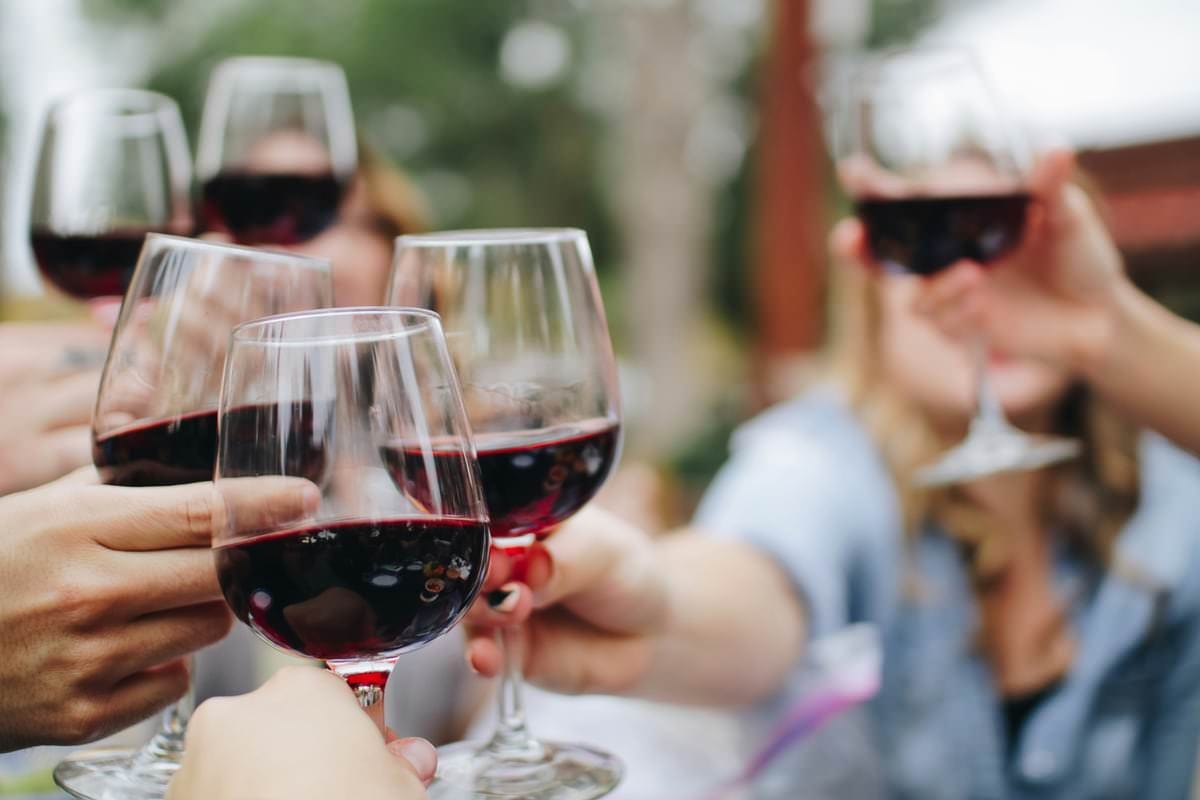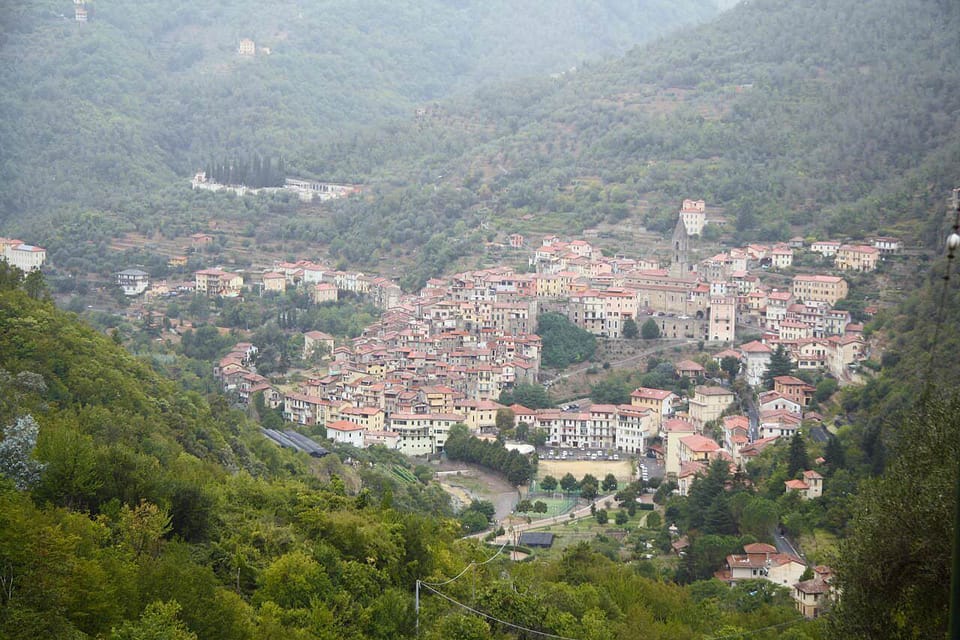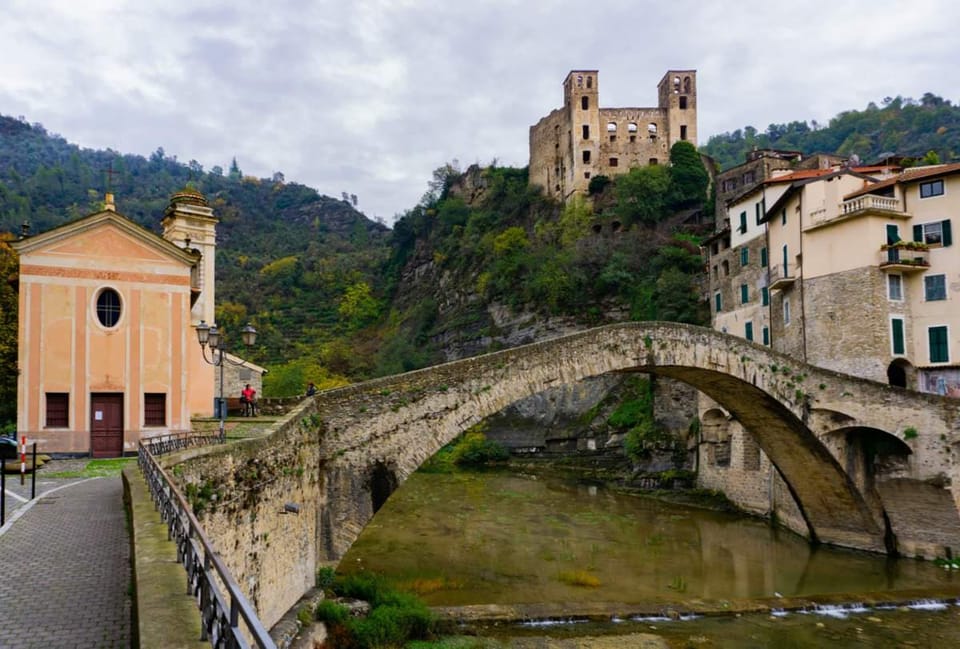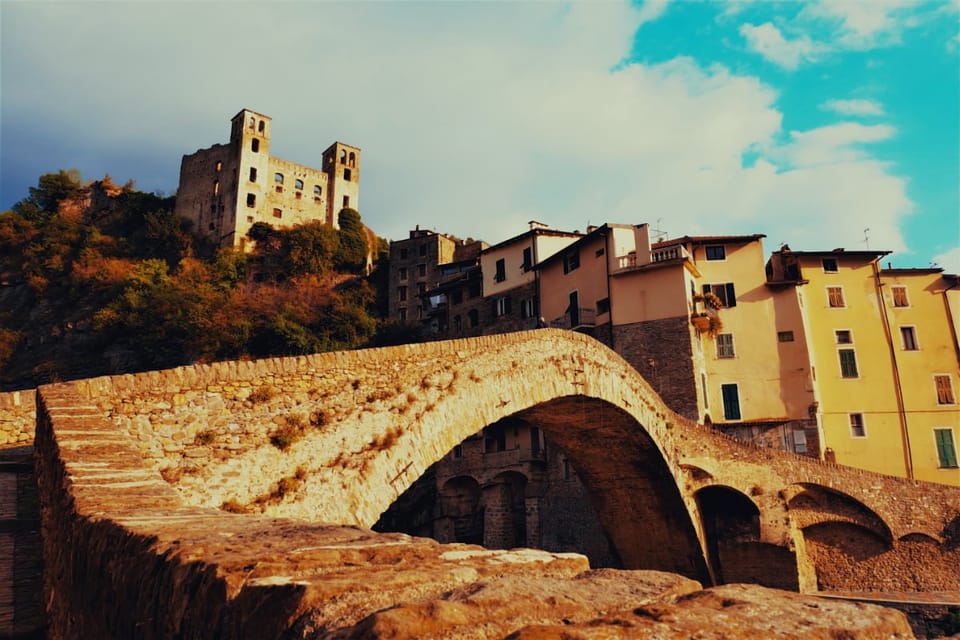Let me tell you about the incredible Rossese di Dolceacqua!

The first wine in Liguria to be awarded the Denominazione di Origine Controllata is a fantastic product that has already been appreciated by Admiral Andrea Doria and Napoleon Bonaparte. It is a niche product that is becoming increasingly known and appreciated worldwide. Discover the characteristics and find local producers to get your hands on this incredible wine!
Although some weaker, paler versions exist, it is quintessentially a generous yet not austere red, with a persistent bouquet and excellent ability to age.
The D.O.C. is well deserved, both from the point of view of long tradition and from the authenticity of the grape variety and the cultivation area. The basins of the Nervia and Crosia streams, on favourably exposed slopes up to a maximum altitude of 600 m, are the perfect setting for this wine.
This wine is one of the most appreciated among Ligurian wines, and it's easy to see why! Its characteristics can be summarized as follows:
- It has a gorgeous ruby red colour that tints towards garnet with age.
- A rich, intense, and delicate vinous smell, with hints of rose, violet, currant, and sometimes even strawberry!
- The taste is soft, warm, and often velvety. Due to tannins, it has a pleasant, slightly bitter streak and is rich in texture and body.
- minimum alcohol content 12° (13° for the superior type);
- minimum acidity of 4.5‰
- minimum dry extract of 23‰
The superior type must be aged for at least a year after the harvest, which is an excellent opportunity to let it develop its full potential!
The best time to enjoy this wine is between four and eight years after it's aged. This wine is perfect with meat dishes in general, but it shines with rabbit casserole in particular! The serving temperature is around 18°, perfect for enjoying this delicious wine!
History
The history of this wine is as fascinating as the wine itself! It has a long and rich history, with many tales of its journey from vine to glass.
Some believe that the ancient Greeks introduced vines to Liguria. In contrast, others claim that the Etruscans first began cultivating vines in the region's western part.
Both are probably right, although the tree crops, still present, testify to the significant trace left by Hellenic settlers, which is really incredible!
Other records date back to the centuries between the late Middle Ages and the early Modern Age. The same Andrea Doria elected Rossese di Dolceacqua as the festive wine of his fleet; even Napoleon Bonaparte had the pleasure of knowing it, a guest of the Marchesa Doria at the end of the 18th century. He loved it so much that he sent a few casks to Paris! And many others helped him during the Italian campaign, giving him the rest and relaxation he needed.
Rossese di Dolceacqua is often raised "ad alberello," as the Mediterranean tradition dictates, so that the plant's foliage shadows the foot and, therefore, the root in summer, protecting them from the sun's rays during the hottest hours. This is a great way to ensure the vines get the protection they need!
The vines are grown in inaccessible areas, where all operations essential to maintaining the vine are compulsorily manual. This has often led to the risk of abandonment of areas of the vineyard that required the replacement of plants that had reached the end of their productive cycle. But this also means that the vines are given the undivided attention they deserve, with all operations being carried out manually.
At a conference held in Dolceacqua in 1988, it was revealed that the maximum yield allowed, as per specifications, had been exceeded.
The previous harvest yielded an impressive 3300 quintals of grapes; today, the picture has mostly stayed the same.
The production area comprises 14 municipalities, or parts of municipalities, spread across the beautiful Nervia Valley and the Crosia Valley. It is a foothill area that ranges from 300 to 600 metres above sea level, offering a stunning backdrop for the vines to flourish.
The grapes used, ROSSESE must be at least 95% and may be supplemented by other local non-aromatic red cultivars (maximum 5%) in the vineyards. The maximum yield per hectare is 90 quintals. In reality, yields are lower partly because the vines are often old and less productive than young ones, which adds to the region's charm.
Rossese di Dolceacqua is a magnificent grape variety with a large leaf provided with five lobes. The bunches are medium-sized with a truncated cone shape, winged and averagely compact. The berries are round, dark, purplish, and slightly waxy – a true delight for the senses.



